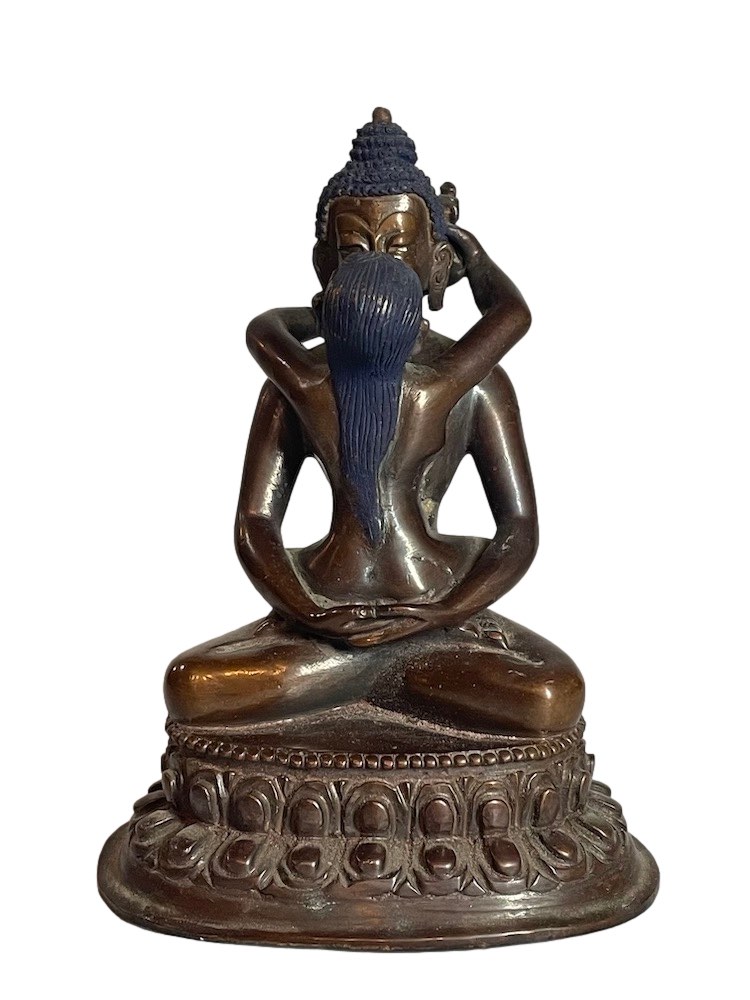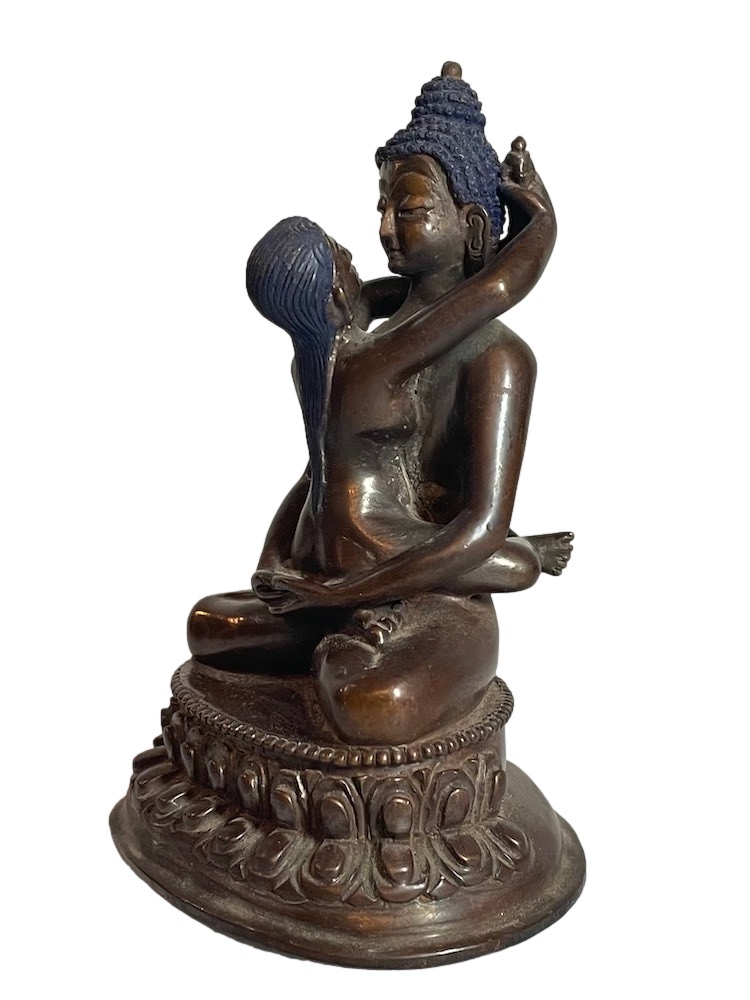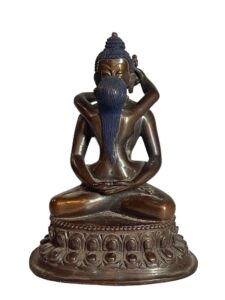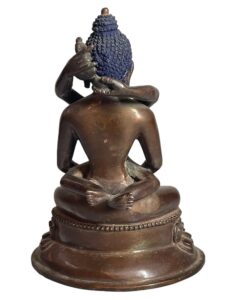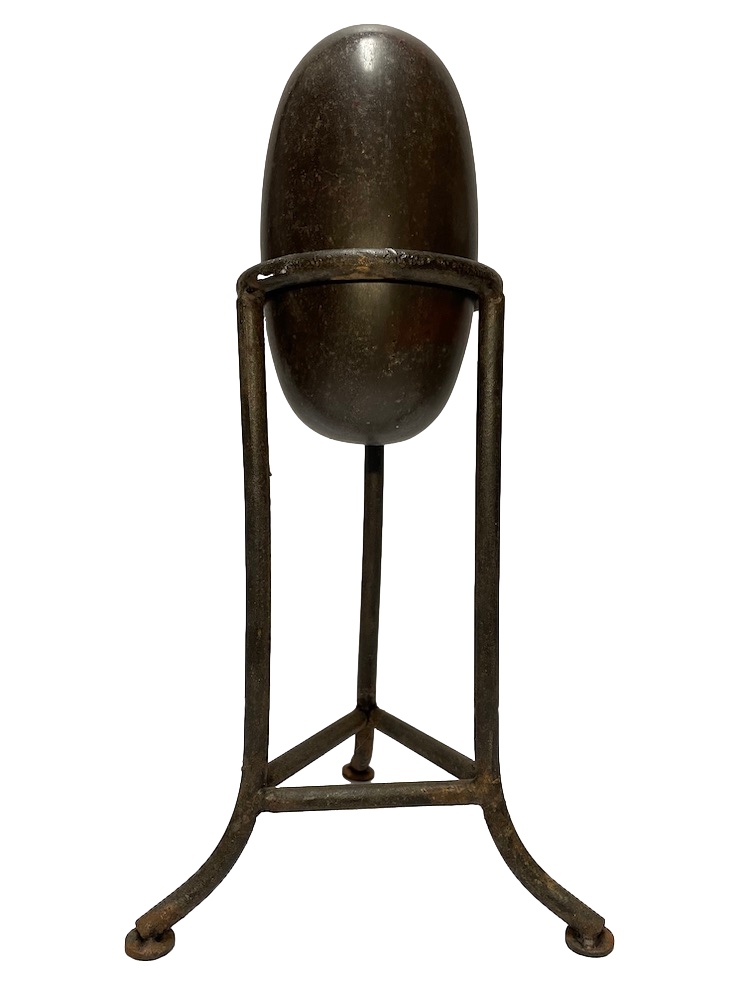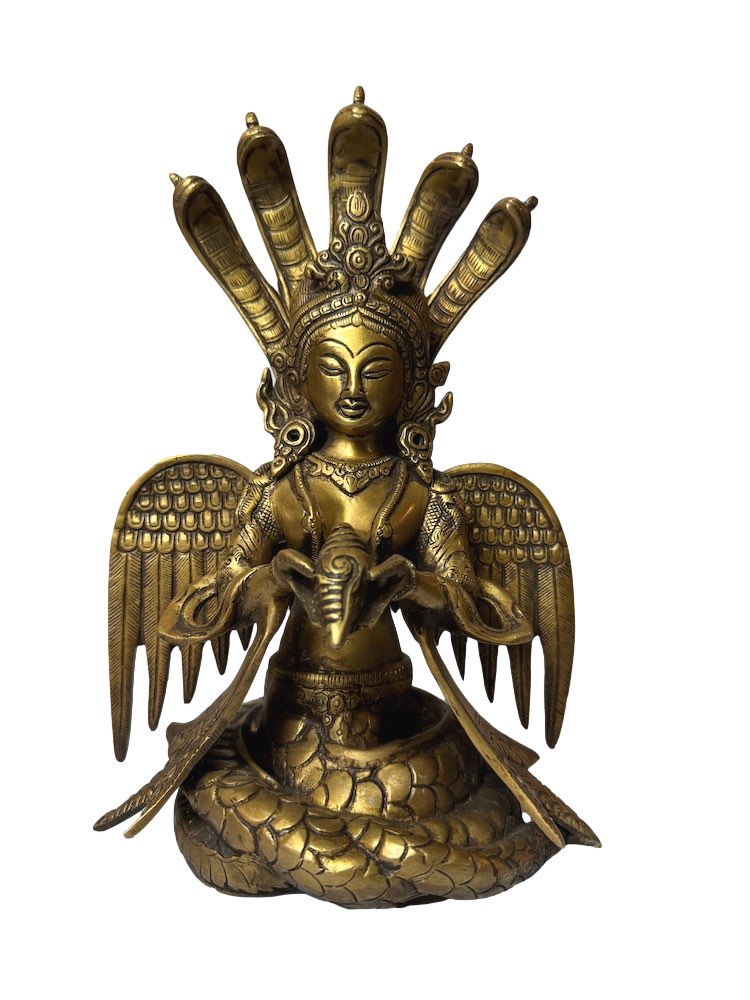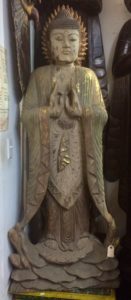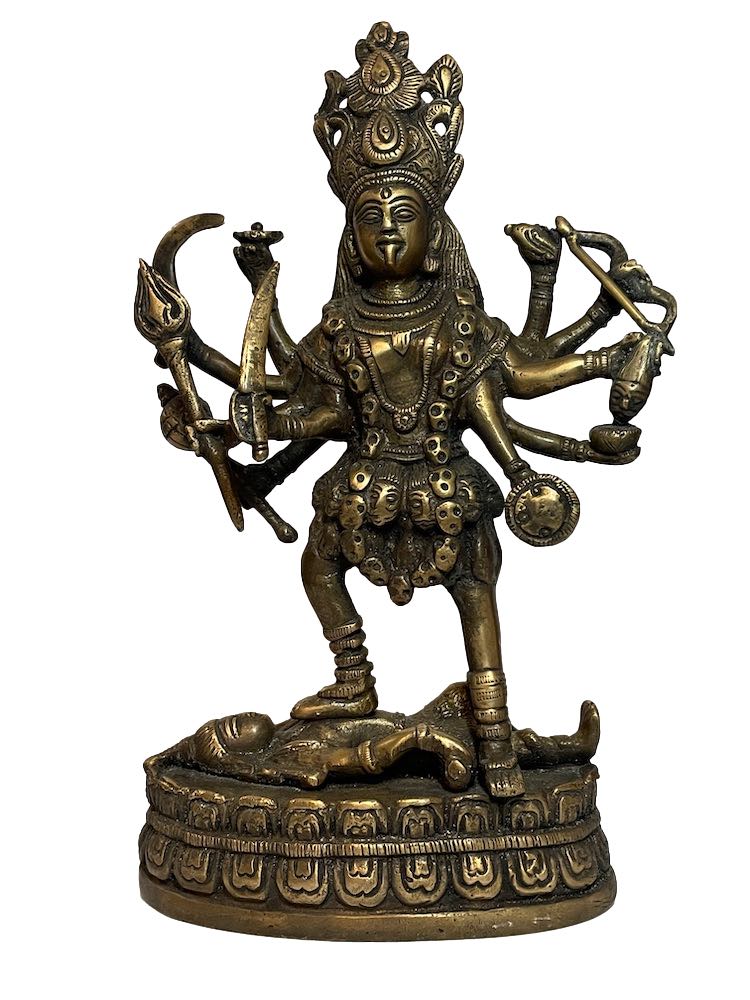Description
Buddha has the goddess Shakti on his lap. It’s a scene from the Tantric Buddhism. She is the consort of the god Shiva and represents the earth’s universal energy, fertility and the female urge to create. Buddha in this setting is also called the Pleasure Buddha. In Tantric Buddhism, the embrace symbolizes the perfect meeting between body and soul. This meeting is therefore also called Nirvana: the ultimate liberation.
Shakti – the Sanskrit name of a supernatural force representing the early universal energy, the source of creativity, fertility and feminine nature. She is derived from Hinduism, sometimes known as “the great Mother of God” in the Hindu worldview. then, was introduced to the Tantric Buddhism after the sect was born.
Nepal and Tibet, the lands located in the Himalayas, are the places where Tantrism is the most popular. Here, the image of Shakti holding Buddha is called Pleasure Buddha. While this image may seem shocking, it has a traditional meaning in Tantric Buddhism. The pose represents the mystical union of the active force, or method (Upaya, conceived of as masculine), with wisdom (Prajna , conceived of as feminine) in a fusion necessary to overcome the false duality of separation between people.
It is believed that during the primordial time, the Yab Yum Buddha saw that the mind was often fooled into believing there was a distinction between “I” and “you”. Thus He sought to liberate his mind from this false distinction. Similar to the Yin Yang symbol in China, it shows that two seeming distinctions actually exist as one, dependent on one another.
During the primordial time, the Yab Yum Buddha saw that the mind was often fooled into believing there was a distinction between “I” and “you”. Thus He sought to liberate his mind from this false distinction. Similar to the Yin Yang symbol in China, it shows that two seeming distinctions actually exist as one, dependent on one another.
Dimensions: 2.5″ x 3.5″ x 4.5″

